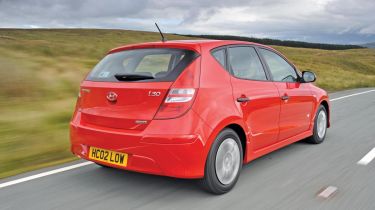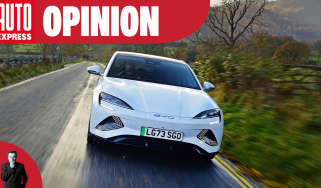Hyundai i30 1.6 CRDi Classic
Will basic trim count against hatch here?
Both of these Korean brands are staging a product offensive that will have rival makers quaking. Incredibly, this has ensured the i30, which was only introduced in 2007, will soon be one of the oldest models in Hyundai’s line-up!
However, while trendy new arrivals such as the Veloster coupé and ix20 supermini-MPV promise to raise the brand’s profile, the i30 has been given its own round of visual changes.
Video: watch CarBuyer's video review of the Hyundai i30
[[{"type":"media","view_mode":"content_narrow","fid":"69217","attributes":{"alt":"","class":"media-image"}}]]
The hatch still looks a bit dated, though. Despite sharing the same basic proportions as the Cee’d, its grille and vertical tail-lights aren’t as easy on the eye as the Kia’s detailing.
Elsewhere, the differences are even more pronounced. Hyundai’s decision to offer its cleanest diesel only in entry-level guise is a brave move. It means buyers have to put up with Classic spec, which makes do with plastic wheel trims and plain black door handles.
Inside, the i30 has manually adjustable door mirrors, a rough plastic finish for the steering wheel and a cheap rubber gearknob that make its entry-level roots all too apparent. You do get an attractive stereo, complete with iPod connection, but after a drive in the Cee’d, you miss little touches such as its multifunction steering wheel and Bluetooth.
Used - available now

2022 Toyota
Corolla
35,249 milesAutomaticPetrol1.8L
Cash £15,800
2021 Skoda
Karoq
51,209 milesManualPetrol1.0L
Cash £12,995
2023 Ford
Focus Estate
23,620 milesManualPetrol1.0L
Cash £15,995
2022 Ford
Focus
32,929 milesAutomaticPetrol1.0L
Cash £18,995At least the Hyundai’s interior space and build quality are a match for its rival. They’re on a par with some of the big names in the sector, too, despite the fact that the i30 is small by class standards. Under the bonnet, both cars use the same 1.6-litre CRDi diesel, which is rattly at low revs and coarse at the top end. But it’s smooth in the mid-range, where the power is.
The overall driving experience in the i30 isn’t as sharp. There’s less front-end grip thanks to its skinny tyres, and the car pushes wide in corners when the Kia copes easily. The softer Hyundai also rolls more in bends, but there’s no clear improvement in ride comfort to counter this.
The i30 had a tiny edge in our in-gear acceleration tests, but it also recorded poorer fuel economy of 46.6mpg, which was 4.1mpg down on the Cee’d.
Both Hyundai and Kia take pride in their aftersales support. Higher mileage drivers will prefer the i30’s unlimited mileage five-year warranty to the Kia’s 100,000-mile seven-year package. Plus, the i30
comes with five years of breakdown cover, rather than the 12-month deal of its rival.
There’s also the promise of slightly stronger resale values and Hyundai’s famed customer satisfaction to consider – the i30 won our 2010 Driver Power survey. So while you don’t get as much kit in the Hyundai, it’s still a tempting long-term bet.
Details
Chart position: 2
WHY: Hyundai has given its family hatch a facelift. But the most efficient diesel engine is only available in entry-level Classic spec. Will that cost it victory?



